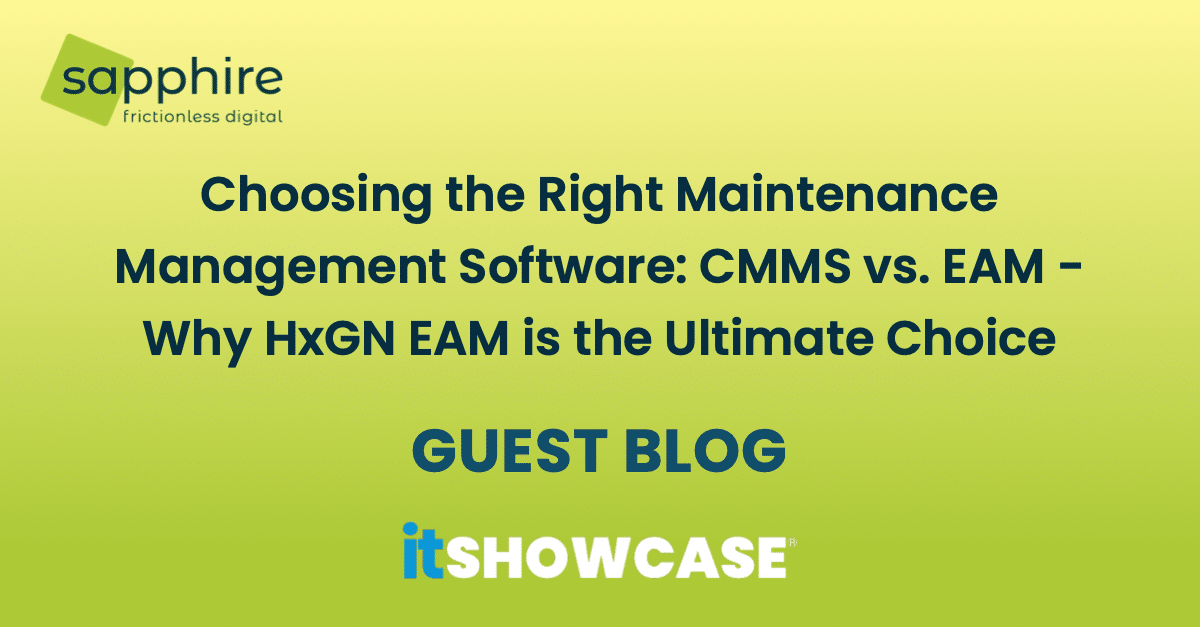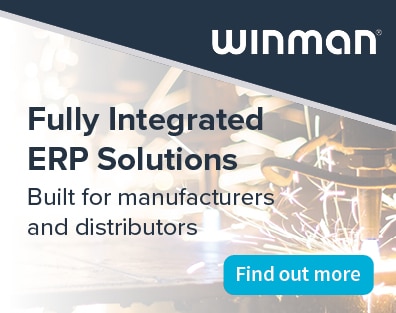Written by Sapphire Systems – regular exhibitor at itSHOWCASE events
Introduction
In today’s fast-paced business environment, maintenance management plays a critical role in ensuring the smooth operation of your assets and facilities. Your business may be contemplating the implementation of a Computerised Maintenance Management System (CMMS) to streamline your maintenance operations. However, before you make a decision, it’s essential to explore the alternatives, such as Enterprise Asset Management (EAM) solutions, and understand why EAM might be a better option for your organisation.
CMMS: The Basics
A Computerised Maintenance Management System (CMMS) is a software tool designed to help organisations manage and maintain their assets efficiently. CMMS is primarily focused on the maintenance aspect, including work order management, preventive maintenance scheduling, and asset tracking.
EAM: A Comprehensive Approach
Enterprise Asset Management (EAM) goes beyond the scope of CMMS. EAM is a holistic solution designed to manage an organisation’s entire asset lifecycle, from acquisition to disposal. EAM encompasses not only maintenance but also other critical aspects like financial management, risk analysis, compliance, and performance monitoring.
Why EAM Might Be a Better Option:
1. Improved Asset Lifecycle Management:
EAM solutions provide a comprehensive view of your assets throughout their lifecycle. This means you can make informed decisions about asset acquisition, maintenance, and retirement, optimising the return on your investment.
2. Enhanced Financial Management:
EAM systems incorporate financial tools to track asset costs, depreciation, and budgeting. This functionality helps organisations make informed financial decisions and allocate resources more efficiently.
3. Compliance and Risk Management:
EAM software helps organisations meet regulatory requirements and industry standards. It allows you to track and manage compliance and assess risks, reducing the likelihood of costly legal issues or accidents.
4. Advanced Reporting and Analytics:
EAM systems offer advanced reporting and analytics capabilities. This means you can make data-driven decisions, improve performance, and predict maintenance needs more accurately, driving your organisation towards data-driven success.
5. Scalability:
EAM solutions are often more scalable, making them a suitable choice for organisations of all sizes. Whether you’re a small business or a large enterprise, EAM can adapt to your evolving needs.
6. Integration with Other Systems:
EAM solutions are known for seamless integration with other systems like Enterprise Resource Planning (ERP) software. This integration can streamline your operations further and improve overall efficiency, ensuring that your software ecosystem stays interconnected and efficient.
7. Future-Proofing:
EAM systems tend to be more future-proof because they offer a broader range of functionalities. As your organisation grows and your maintenance management needs evolve, EAM can accommodate these changes.
Conclusion:
While CMMS solutions serve a valuable purpose in maintaining assets, Enterprise Asset Management (EAM) offers a more comprehensive approach to asset management. EAM solutions encompass maintenance but also address financial management, compliance, risk analysis, and more. For organisations looking to maximise their asset performance, improve financial control, and ensure long-term success, EAM may be the superior choice, especially when partnered with experts like Sapphire. Their fast deployment option and commitment to continuous improvement make them the ideal choice to help your organisation thrive with EAM, ensuring you never have to swap systems again as EAM grows with you.
Written by Sapphire Systems – regular exhibitor at itSHOWCASE events






